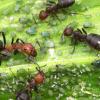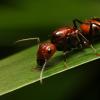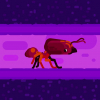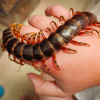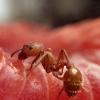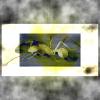I mentioned light sensitivity in my CA02 journal. I also notice it in my astute ants.
From what I've found, sensitivity to the light can also change.
What I found (mostly CA02 Camponotus)
1. Queen, Major, Medians (to a slightly lesser degree) seem to be sensitive to light while the minor workers don't seem to notice it at all (other than sunlight which also has heat properties so they can react to it based on that). I feel like the Queen is the most sensitive one of them all. Also noted in my journal, I notice that when these ant castes that can sense light notice too much light, they send out an alarm to the minor workers and that's when the minor workers react and start moving the brood etc.
2. After the cooldown period (simulating colder months), they were VERY sensitive to light. Reminds me of us waking up to someone opening the curtains in the room and letting light in. My reaction would be similar to a vampire's like "IT BURNS IT BURNS!!!!"  A month later, I notice a lot less and can actually take some quick pictures.
A month later, I notice a lot less and can actually take some quick pictures.
3. They also get more use to it when they are in a room that has some light. Room with dim light and then turning on a light for picture taking, they're not as reactive. As opposed to a dark room and then turning on the light.
4. Reactions from ants to the temporary exposure to medium / high amounts of light, mostly for picture taking: Move brood elsewhere (from my experience, this rarely happens and is in the more extreme cases. They also only move a couple brood out of the area if they do), sticking around and getting use to it, finding parts of the nest that is darker and hiding in there. The Queen can also tolerate more light when she is facing AWAY from the light source. I have hit her from behind (that's what he said) with a light source and she seems less reactive. I've also had ants start napping and almost don't seem to mind the light, Queen included. Like she was kinda reacting to the light, then I notice her pausing and looking like she was trying to rest / take a nap and not react to light at all which I took advantage of and got off a few pictures. Other reactions are from my astute ants, they will use the moisture to gather sand, empty cocoons and trash and try to cover up where the light is coming through (mostly the clear glass / plastic areas where we view them through). CA02 Camponotus don't seem to do this, thankfully.
5. A lot of these ants do seem to be okay with low light or indirect light. It's when the light hits around medium or higher and especially when it's shining right in their face, that's when they notice it a lot more.
6. My astute ants, in the beginning, I notice that she had almost no reaction to light, now she does a lot more.
7. I also notice that ants that are busy tending brood and with nest activities are less likely to react to light. You can also see some extra sensory organs on Queen's head (posted some super close up pictures of my astute Queen in the astute journal) that helps them sense light. It's quite interesting to see.
Sharing my observations and chitchatting 
Edited by BleepingBleepers, July 6 2024 - 2:10 PM.


